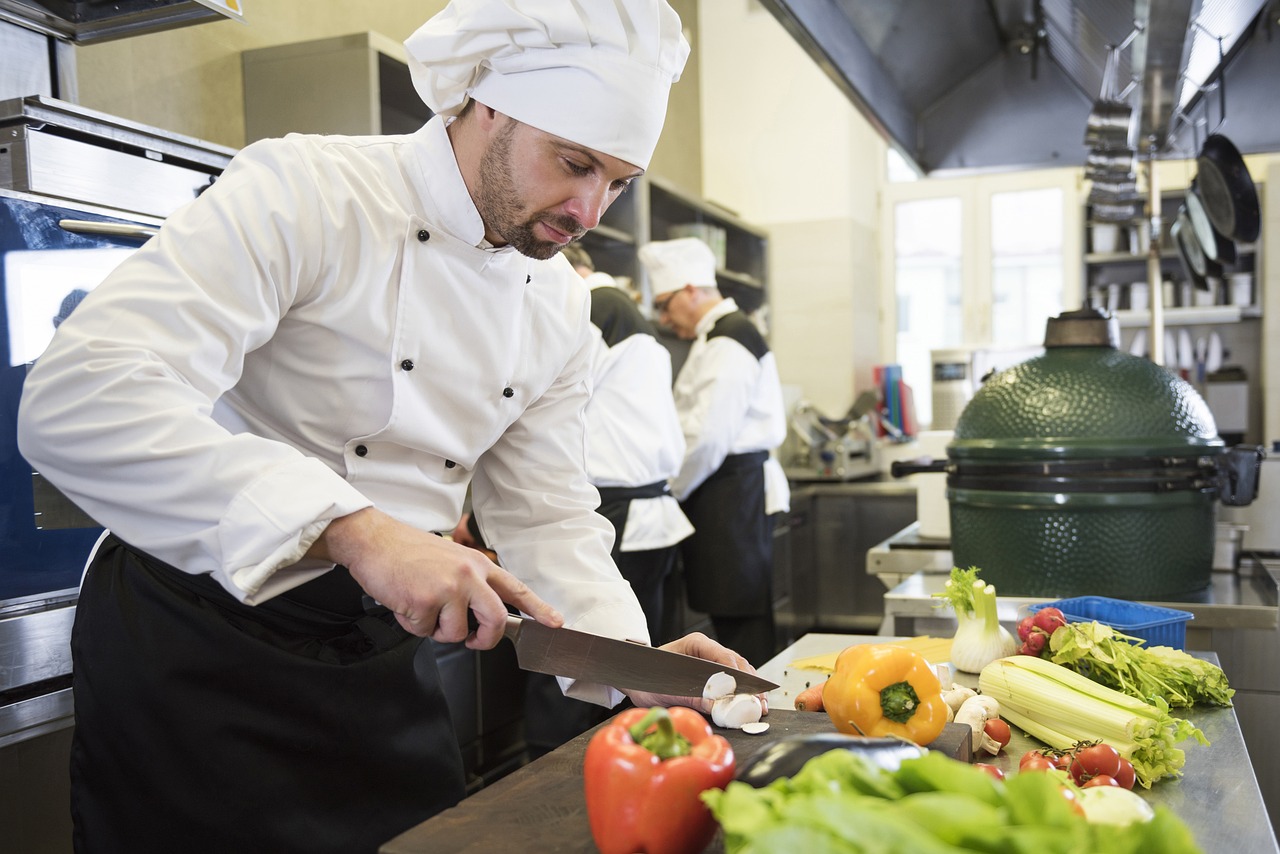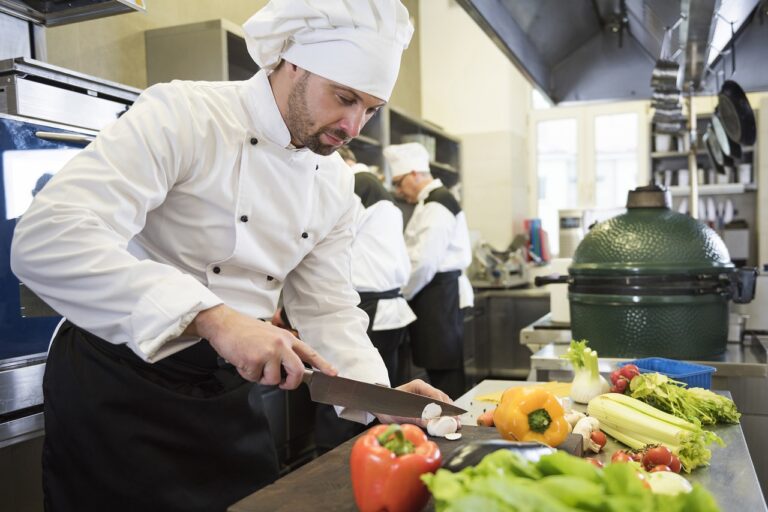
How to Start a Catering Business from Home in India
How to Start a Catering Business from Home in India: The catering business is one such opportunity for the food enthusiast to transform one’s culinary skills into a profitable home-based venture. Undoubtedly, it is a welcome entry time with an increased demand for personalized catering services coupled with a rising trend of home-based businesses in India. A catering business can be started from home with minimum capital investment and will evolve gradually into a sustainable food service operation.
This is an all-inclusive, step-by-step guide that walks you through the most crucial steps needed to set up and scale your catering venture at home in India. We begin with planning and legal requirements up to the development of menus and marketing strategies. You could either focus on corporate events, weddings, or private parties. This step-by-step guide will ensure that you set up a strong foundation for your catering business.

Planning Your Home-Based Catering Business
Success in the catering industry begins with careful planning and strategic decision-making. Let’s dive into the essential elements that will set your home-based catering venture up for success.
Defining your niche and target market
Finding your unique place in the catering market is crucial for standing out from competitors. Your niche can be based on:
- Specialized cuisine (Italian, vegetarian, or fusion)
- Event types (corporate meetings, weddings, or private parties)
- Service style (buffet-style, plated dinners, or food stations)
- Target audience (health-conscious groups, corporate clients, or wedding parties)
Creating a distinctive niche helps position you as the go-to caterer for specific events or cuisines. For instance, if you decide to focus on corporate events, you can develop expertise in quick setup, professional presentation, and business-appropriate menu options.
Creating a comprehensive business plan
A well-structured business plan serves as your roadmap to success. Here are the essential components to include:
- Executive Summary
- Company Overview
- Market Analysis
- Menu and Services Description
- Marketing Strategy
- Operations Plan
- Management Structure
- Financial Projections
Your business plan should detail how you’ll operate from your home kitchen, including any necessary modifications or equipment investments. Consider factors like storage space, cooking capacity, and delivery logistics.
Setting realistic goals and financial projections
Smart goal-setting is crucial for your catering business’s growth. Implement the SMART framework – make your goals Specific, Measurable, Achievable, Relevant, and Time-bound. For example, instead of setting a vague goal like “increase revenue,” aim to “increase monthly revenue by 15% within six months through corporate event bookings.”
Financial projections should include:
- Startup costs for equipment and licenses
- Monthly operating expenses
- Projected revenue based on event types
- Pricing strategy for different services
- Cash flow forecasts
Remember to start small and scale gradually. Many successful caterers begin by serving smaller events or offering personal chef services before expanding to larger functions. This approach allows you to build confidence, perfect your systems, and establish a strong reputation without overwhelming yourself or your resources.
Consider your current capabilities when setting initial targets. If managing a 200-person wedding seems daunting, begin with intimate gatherings of 20-30 people. As you gain experience and confidence, you can gradually expand your service capacity and event size.
Legal Requirements and Setup
Navigating the legal landscape is crucial for establishing a legitimate home-based catering business in India. Let’s explore the essential requirements and setup processes you’ll need to address.
Obtaining necessary licenses and registrations
The foundation of your catering business lies in securing proper documentation. Here are the mandatory registrations you’ll need:
- FSSAI License/Registration: Required for all food businesses, with different categories based on turnover
- Basic registration for small operations
- State license for turnover between ₹12 lakhs to 20 crores
- Central license for turnover above 20 crores
- GST Registration: Mandatory if annual turnover exceeds ₹20 lakhs
- Health Trade License from your local municipal corporation
- Shop and Establishment Registration from the state labor department
- NOC from electricity and fire departments
Important: Apply for your FSSAI license at least 30 days before starting operations, and ensure all documentation is submitted to your regional FSSAI office.
Setting up your home kitchen for commercial use
Converting your home kitchen into a commercial space requires careful planning and specific modifications:
- Install proper ventilation systems with hood vents
- Set up dedicated storage areas for ingredients and equipment
- Create separate zones for raw material washing and preparation
- Install commercial-grade equipment suitable for your production volume
- Ensure adequate lighting with protective covers
Your kitchen must have sufficient work surfaces and proper spacing between different preparation areas. Essential installations include a large sink for washing dishes, hand-washing stations, and proper waste disposal systems.
Understanding food safety regulations
Food safety compliance is governed by the Food Safety & Standards Act, 2006, which mandates specific hygiene and sanitary practices. Key requirements include:
- Maintaining continuous supply of potable water with proper filtration systems
- Installing proper cleaning and sanitizing facilities
- Implementing effective pest control measures
- Ensuring proper air quality and ventilation
- Following strict personal hygiene protocols for all staff
Food Safety Supervision is crucial, and you must ensure all personnel handling food are properly trained in food hygiene matters. Environmental Health Officers (EHOs) conduct regular inspections to enforce these regulations, and non-compliance can result in penalties or business closure.
Your kitchen must have designated areas for different activities to prevent cross-contamination. This includes separate spaces for:
- Raw material storage
- Preparation areas for different food types
- Cooking zones
- Packaging and dispatch areas
Remember to maintain detailed records of your food safety practices, including cleaning schedules, temperature monitoring, and staff training documentation. These records will be essential during health inspections and for maintaining your food safety certifications.
Developing Your Menu and Services
Creating a successful menu and service offering is the cornerstone of your catering business’s identity. This section will guide you through developing a distinctive culinary presence that sets you apart from competitors.
Crafting a unique and appealing menu
Your menu is more than just a list of dishes—it’s your business’s signature statement. Consider specializing in specific areas to establish a strong market position:
- Regional Indian cuisines
- Contemporary fusion dishes
- Health-conscious options
- International cuisine
- Specialized dietary requirements (vegetarian, gluten-free)
- Theme-based menus
When designing your menu, focus on dishes that maintain quality during transport and setup. Create detailed menu descriptions that appeal to the senses and clearly communicate your culinary vision. Consider developing different menu tiers to accommodate various budget ranges and event types.
Pricing your catering services
Strategic pricing ensures profitability while remaining competitive. Here’s a comprehensive breakdown of pricing considerations:
| Cost Component | Percentage of Total Price |
|---|---|
| Food Cost | 24-28% |
| Labor | 30-35% |
| Rentals & Equipment | 15-20% |
| Overhead | 10-15% |
| Profit Margin | 15-25% |
Key pricing strategies:
- Fixed pricing for smaller events
- Tiered pricing for larger gatherings
- Per-person rates vary by service style
- Premium pricing for specialized menus
Remember to factor in all costs, including ingredients, staff, equipment, utilities, and transportation. Your final pricing should reflect both market positioning and operational expenses while ensuring sustainable profit margins.
Establishing relationships with suppliers
Building strong partnerships with suppliers is crucial for consistent quality and cost management. A reliable supplier network ensures:
Quality Assurance: Partner with vendors who consistently deliver high-quality ingredients. Regular communication helps maintain standards and address any quality concerns promptly.
Cost Management: Develop relationships that lead to better pricing through:
- Bulk purchasing agreements
- Seasonal deals
- Early payment discounts
- Special promotions
Professional Partnership: Nurture supplier relationships by:
- Maintaining timely payments
- Providing consistent order volumes
- Communicating clearly about needs and expectations
- Showing appreciation through loyalty
Consider working with multiple suppliers to ensure backup options and competitive pricing. However, focus on building deep relationships with your primary vendors who can become trusted partners in your business growth.
Remember to regularly review your supplier arrangements and renegotiate terms as your business grows. A strong supplier network can help you maintain competitive pricing while ensuring consistent quality in your catering services.
Marketing and Growing Your Catering Business
In today’s digital age, effective marketing and strategic growth are essential pillars for scaling your catering business. With the right combination of online presence, networking, and social media engagement, you can significantly expand your reach and build a strong client base.
Building an online presence
A strong digital footprint is crucial for modern catering businesses. Over 60% of customers now search for catering services online before making decisions. Your website serves as your virtual storefront and should include:
- Online ordering capabilities with mobile optimization
- High-quality food photography
- Detailed menu descriptions and pricing
- Customer testimonials and reviews
- Clear contact information and booking process
Your website must be mobile-responsive, as nearly 60% of users place orders via phone. Implement a user-friendly ordering system that includes essential features like dietary requirements, delivery options, and cut-off times for bookings.
Consider investing in professional food photography to showcase your culinary creations. High-resolution images highlighting your dishes’ colours, textures, and presentation can significantly impact potential customers’ decisions.
Networking and partnerships
Building strategic partnerships can exponentially grow your catering business. Focus on establishing relationships with:
| Partner Type | Benefits | Approach Strategy |
|---|---|---|
| Event Venues | Direct referrals | Personal visits and formal meetings |
| Wedding Planners | Regular business | Portfolio presentations |
| Corporate Offices | Bulk orders | Professional proposals |
| Local Businesses | Community presence | Networking events |
When approaching potential partners, remember to:
- Research their specific needs and clientele
- Prepare a professional presentation of your services
- Offer mutually beneficial arrangements
- Maintain regular communication
- Deliver consistent quality to maintain trust
Leveraging social media for promotion
Social media platforms offer powerful tools for showcasing your catering services. 71% of consumers are more likely to recommend brands after positive social media experiences. Each platform serves different purposes:
Instagram: Perfect for visual content, focusing on food photography and event setups. Use Stories to share behind-the-scenes content and highlight your food preparation process.
Facebook: Ideal for community engagement and event promotions. Create a business page to share updates, collect reviews, and connect with local food communities.
LinkedIn: Essential for corporate catering connections. Share professional content and connect with business decision-makers.
Maximize your social media impact by:
- Posting consistently with high-quality images
- Engaging with followers through comments and messages
- Using relevant hashtags to increase visibility
- Sharing customer testimonials and event success stories
- Cross-promoting content across platforms
Work with food influencers to expand your reach. Create a list of potential collaborators who align with your brand values and target audience. When approaching influencers:
- Study their content style and engagement rates
- Propose clear collaboration terms
- Provide unique promotional codes
- Track conversion rates
- Maintain professional relationships
Remember to integrate your social media presence with your website by including social proof and direct booking links. Use consistent branding across all platforms to build recognition and trust with potential clients.
Implement a digital marketing strategy that includes:
- Search engine optimization (SEO) for local searches
- Google My Business optimization
- Email marketing campaigns
- Customer relationship management (CRM) system
Track your marketing efforts using analytics tools to understand which strategies deliver the best results. Regular monitoring helps adjust your approach and allocate resources effectively for maximum impact on your catering business growth.
Conclusion
Starting a catering business from home requires attentive, robust attention to several key aspects that pave the road to success. The success of your catering business in the eyes of customers would be built upon careful planning, legally compliant practices, and intelligent menuing.
Important aspects, such as food safety standards, proper kitchen establishment, and developing supplier relationships, would set the basis for delivering consistency in quality. All these elements combined would form the backbone to create credibility and build trust with clients.
An effective marketing strategy and continuous improvement of services lead to professional growth. Usage of social media, strategic partnerships, and networking creates a potential business reach while sustaining quality.
An effective pricing strategy and able operations management lead to sustainable profits. If home-based caterers acquire most of these aspects, they position themselves for steady growth in the dynamic food service market of India.
Note: Without a CTA within the tags, I wrote a general conclusion about overall ideas as well as some closure for the article. Do you have a specific CTA that you would want to insert? I’d be more than happy to edit the conclusion for you based on that.







